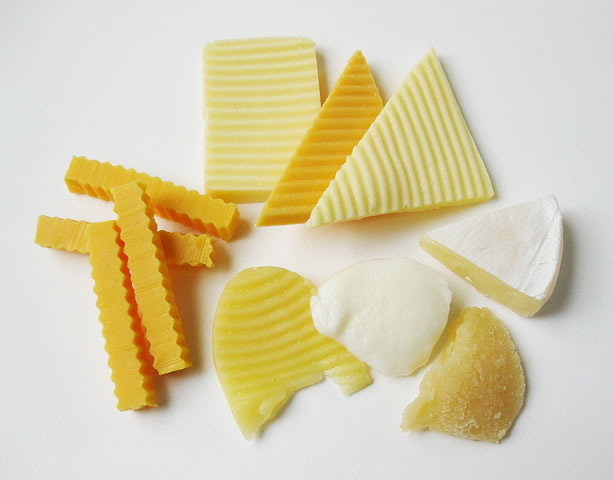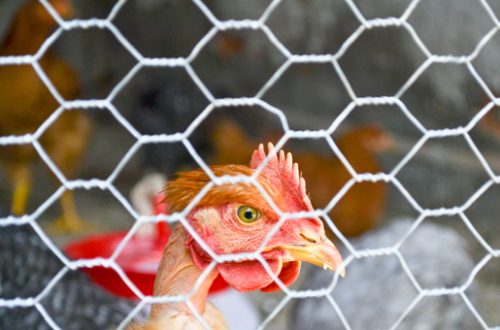
The Cheese “Terrroir”
Even in the works of the ancient Roman writers, the area of present day Bosnia and Herzegovina was mentioned in the context of production and processing of milk, in which cheese was one of the main products. However, if judging by the current strategic documents on all government levels in BiH, this tradition, alongside any potential benefits it might have in today’s economy, seems to be forgotten.
The year 2011 in Bosnia will be remembered as the year of political paralysis on the State level, which has halted reforms needed to help the country’s shivery economy, and failed to bring it any closer to the EU membership. The year was also marked with the news on Croatia finishing the EU accession negotiations, and preparing to become the 28th member state as from July 2013. Sharing two thirds of the border, it was clear the Croatia`s EU Accession Treaty will have a significant impact on Bosnia. One sector in particular has captured public attention – Bosnia`s dairy industry.
Milk makes up to almost 73 % of Bosnia’s total export of dairy products, and more than half of that milk is being exported to Croatia. So far, there are no exports of dairy products to the EU, as the EU standards on food safety have not yet been implemented in Bosnia. In such circumstances, no wonder that Croatia’s pending accession to the EU set of the alarm bells and raised some questions: “Will the year of 2013 mark the end of the milk exports to Croatia?”, and “What will this mean for the Bosnian diary industry and farmers?” But, are we asking the right questions?
Bosnian “White Gold”
Even in the works of the ancient Roman writers, the area of present day Bosnia and Herzegovina was mentioned in the context of production and processing of milk, in which cheese was one of the main products. However, if judging by the current strategic documents on all government levels in BiH, this tradition, alongside any potential benefits it might have in today’s economy, seems to be forgotten. While dairy as an industry is considered to be one of the country`s most important agricultural sectors with good growth potential, cheese as a final product is given little attention in these documents. Autochthonous cheese production has been preserved in rural Bosnia, but the core of BiH’s dairy industry today is milk.
It is estimated that around 100,000 households breed cattle in BiH, a third of which make a living out of dairy farming. Most of them own just up to 5 cattle and produce far less milk then the EU average. Half of the approximated 450 million liters of milk produced every year in Bosnia is either consumed directly on the farms or processed and sold at local outdoor markets. The other half is purchased by local dairies and the going price of a liter of raw milk is slightly over 0.50 KM. Most of Bosnian farmers produce just enough milk to make the ends meet, and cannot grow a business out of it. It is then not surprising that a large portion of them do not meet even the basic hygienic criteria for milk production, as they have no electricity and sometimes even no running water on their farms.
At the same time, BiH citizens consume about 500 million liters of milk and dairy products every year. Unfortunately, Bosnian production does not meet even half of the domestic demands, and as a result, most of the value-added milk products (cheese, sour cream, etc) are imported. More than 50% of total dairy import comes from Croatia, while the reminder mostly comes from the EU countries.
Six big dairy companies in BiH – five of which are owned by international corporations – are responsible for the majority of dairy production in the country. They have already implemented HAACP systems and ISO 9001 management standards, and as far as production technology is concerned, these dairies face no obstacles regarding export to the EU. It is Bosnia`s slow progress with the EU integration processes that prevents them from accessing the EU market. As a consequence, they are focused on non-EU countries, and so far Croatia represented half of their export market. The UHT sterilized milk represents bulk of exports and accounts for 73% of total dairy exports, while cheese accounts for only 13%.
In 2010, as Croatia was getting closer to finalizing negotiations with the EU, the BIH Ministry of Foreign Trade and Economic Relations (MoFTER) – aware that if the BiH food safety system remains below EU standards, the country stands to lose half of its dairy export market – developed a Road Map to create conditions to enable exports of products of plant and animal origin to the EU. This document presents a guide to relevant institutions in the BiH food network on what they need to do in order to create an effective food safety system, recognized by the EU. So far the Roadmap remains incomplete, and just recently, after Croatia got the accession date, it has started capturing the attention of relevant authorities again. The problem, however, is that the alarms were set off around one issue: how to keep the dairy industry on its current level – which means poor farmers selling their milk to dairies which then process it into fast-turnover, low margin products – while the real debate on how to improve the diary industry in Bosnia does not exist.
Long-term vision seems to be blurred completely. Probably not even the Road Map would have begun to be discussed, if the accession date was not given to Croatia. And still, the debate seems to keep ignoring the greater picture – the possibility to export dairy products to the EU. A full implementation of the Road Map is now a necessity if Bosnia is serious about preventing a fatal blow to thousands of farmers, but what is not being mentioned is what happens afterwards. Once the Roadmap is implemented and the European Commission decides to put Bosnia on the list of countries eligible for the export to the EU, will the BiH dairy industry be able to compete on these markets? How attractive Bosnia`s current dairy products would be to the EU countries’ markets? UHT sterilized milk is most certainly not.
Taking it to Another Level: the “Terroir” of Cheese
A katun is a traditional Vlašić hut in which the local farmers have a centuries-long tradition of famous sheep cheese making. The “Katun” is also a registered trademark under which the cooperative “Eko Vlašić” produces and sells sheep cheese made from local farmers’ milk. It was established in 2003 with a goal to protect a specific sheep breed, known as “Vlašićka pramenka” and protect the tradition of producing cheese called “Vlašićki” or “Travnički” through its standardisation. Buying sheep milk from around 160 farmers, Eko Vlašić is able to produce around 50 tons of various cheeses every month.
For the co-founder of “Eko Vlašić”, Omer Mrakić, Vlašić Cheese is not only a legacy from the past, it is also the future. Originally from the village of Vitovlje on the Mount Vlašić, this 35-year-old agronomist is confident the tradition of making Vlašićki cheese will bring profit to him, but also to all of his cooperates. Omer knows it will require a lot of hard work – first of all, to persuade the farmers to standardise their methods of making cheese – but he is aware of the great advantage that unique natural resources of the region represent. “We don’t have to look far, all we need is already here”, says Omer.
Possibly without even realising it, “Eko Vlašić” is getting ready to take part in what is called the “experience economy“. The “unique natural resources of the region” Omer refers to are called the Terroir of Cheese. The concept of experience economy treats physical products (goods) in the same league as services. It means that it is no longer enough to offer only goods and/or services, as the consumers are now looking for experiences. The wealthier consumers are, the more they are willing to pay for products that offer experiences.
An important aspect of selling an experience together with a product is a theme or the story behind the product, which is what consumers end up paying for. For most of the products on the modern market, the companies invest into marketing stories, in order to create an image around the product, which focuses on the experience the customers get from it. There are, however, products with genuine stories, enriched with tradition, with legacy and history that can charm modern customers and offer them an experience in consumption – products with designated origins or geographical indications. Such products, for example, are traditional cheeses.
Cheese production activity is cultivated in family tradition, running through generations. Cheeses are an inevitable part of history and material treasure of a country. They are part of the tradition such as songs, folklore, or even costumes. As a low-level income country, Bosnia is clearly not a best market for cheese, let alone for a premium cheese which charges for the experience it brings along. An average Bosnian consumes less than 5 kg of cheese annually, while average European consumes more than 17 kg a year. Being limited to a market in which the citizens’ purchasing power is considerably lower than that in the EU, farmers see no real demand for high-end products. That is the reason why producers do not see the benefit of making such a product and that must change.
On the other hand, cheese consumption is on a rising curve in the EU, and nearly 40% of milk is consumed as cheese. Such a market presents an opportunity for Bosnian small dairy farmers to become globally competitive. The increasing willingness of EU consumers to pay more for products that offer experiences is on their side. In order to maximize the benefits of being allowed to take part in the EU dairy market, BiH must secure, not only value-added products, but products that are competitive in the economy of experiences.
Cashing in the Tradition – the Swiss Example
The competitiveness and prices of traditional cheeses, in comparison to conventional products, are significantly higher and keep on increasing. In the EU, such tradition has protected geographical status (PGS) or geographical indication (GI) that guarantees their quality. In order for a product to be registered at the EU level, it must first undergo a registration process at the state-level. Even though the BiH CoM adopted legislation necessary to protect the originality and geographic origin of food on the State level, not a single request to acquire this status has been made so far.
Practice in the EU countries has shown that in order to register a product’s geographical indication, all the producers of a particular product must work together to decide what attributes constitute the product’s essence, and what characteristics are accidental or secondary, and can therefore be left to the discretion of each producer. It is up to producers to organise themselves and define precise standards for making their traditional products. When it comes to Vlašički cheese, standards were never defined, and all kind of products are being sold in Bosnia under that name. The problem is the producers currently have no incentive to change their performance, thus no matter how genuine story behind it there is no way to build a brand.
The activity of the Eko Vlašić has been focused on distribution of products to the local market, but the cooperative is starting to consider exporting. Whether they will be able to export to the world`s largest cheese market does not depend entirely on them – Bosnia still lacks is a country-wide food safety system compatible and recognized by the EU. It is the job of public administration to provide the producers with that system.
While Omer Mrakić and similar entrepreneurs certainly do not lack visions, the capacity to succeed on the EU market will require other producers to live up to the requirements as well. Given the centuries old tradition of production, BiH cheeses certainly do not lack stories and charm to produce a desired experience for consumers in the EU. These stories cannot, however, compensate for the low quality of milk resulting from poor farming conditions of the local producers. And this is where the government should kick-in and look for a model that can be followed – that should not be too hard.
Just like in Bosnia, the picturesque mountain meadows of Switzerland are suitable for cheese production. Traditional Swiss cheese is not produced in large factories, but in rural small farms dairies. This decentralized production is a determining factor for high quality cheese, which can only be guaranteed if the milk is delivered to cheese makers immediately after milking. Recognizing the economic benefits of such production, in order to help farmers achieve necessary standards on their farms, built more than a century ago, the Swiss government for many years provided funds the farmers needed to upgrade their facilities. Many of the Swiss cantons have also secured funds for improvement of the dairy farms. This policy has enabled the farmers to maintain the high level of quality, which together with clever marketing, ensures high profits. The very same story could be told in Bosnia too.
It is self evident that Bosnian diary industry has yet to reach its full potential. For that to happen, the state and entity governments must build mechanisms and implement necessary standards, while the farmers need to associate and build up strong networks to produce high quality premium products.
Instead of only patching gaps and thinking about saving the current Croatian market, let us consider how to make the BiH dairy products competitive on the entire EU market in a year from now. The year 2012 should be the year when we re-think, question and invest smartly. The dairy industry is an example of a sector that needs a little nudge. This opportunity should not be wasted.
We wish you a happy New Year, hoping it will be marked with thought-through policies, wise strategies and long-term visions.





